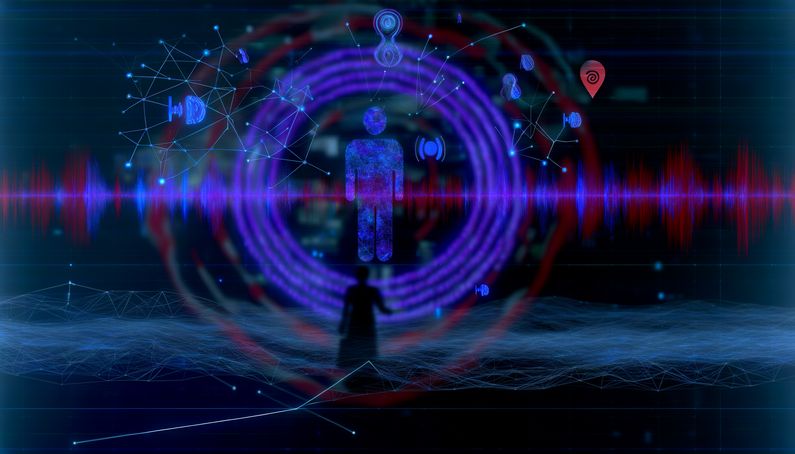
The Rise of AI-Powered Vishing: A New Era of Cyber Threats
AI-powered vishing, an advanced form of voice phishing, is transforming the realm of cybersecurity threats. Unlike traditional vishing, which depended on human impersonation, AI-powered vishing uses cutting-edge technologies like text-to-speech synthesis and deep learning to craft highly convincing synthetic voices. This advancement enables attackers to replicate voices with astonishing precision, making it difficult for victims to differentiate between authentic and fraudulent calls. According to Bleeping Computer, Microsoft has shown that a voice can be cloned in just three seconds, allowing scammers to create realistic AI voices with minimal effort. This technological leap poses a significant threat to both individuals and organizations, as highlighted by Respeecher.
Understanding AI-Powered Vishing
The Evolution of Vishing Attacks
Vishing, or voice phishing, has undergone a significant transformation with the introduction of artificial intelligence (AI). Traditionally, vishing relied on human impersonation, but AI has added a new layer of sophistication to these attacks. AI-powered vishing employs advanced technologies such as text-to-speech (TTS) synthesis and deep learning to produce highly convincing synthetic voices. These technologies enable attackers to clone voices with remarkable accuracy, making it challenging for victims to distinguish between genuine and fraudulent calls. According to Bleeping Computer, Microsoft claims that a voice can be cloned in just three seconds, enabling scammers to create realistic AI voices with minimal effort.
Techniques and Tools Used in AI-Powered Vishing
AI-powered vishing attacks utilize a range of techniques and tools to deceive victims. A key component is AI voice cloning, which mimics the vocal characteristics, intonation, and speech patterns of targeted individuals. This technology allows attackers to impersonate trusted figures, such as bank representatives or government officials, with unprecedented realism. Additionally, AI-powered vocoders and models like Google DeepMind’s WaveNet, which generates human-like speech, enhance the quality of synthetic voices, making them even more convincing.
Another tool used in AI-powered vishing is robocall automation. This technology enables cybercriminals to conduct large-scale vishing campaigns with minimal human intervention. By automating the process of generating convincing audio recordings, attackers can efficiently target a broader pool of potential victims. This scalability makes AI-powered vishing a potent threat in the cybersecurity landscape, as highlighted by Respeecher.
The Anatomy of an AI Vishing Attack
AI vishing attacks typically follow a structured process designed to manipulate victims into compliance. The first step is reconnaissance, where attackers gather personal information about their targets. This information is then used to create a sense of familiarity and trust during the vishing call. Next, attackers use AI-generated voices and spoofed caller IDs to impersonate trusted entities, such as banks or corporate executives. The goal is to exploit the victim’s trust and create a sense of urgency, often by claiming a security breach or overdue payment.
During the call, scammers employ persuasive language and emotional manipulation to pressure victims into revealing sensitive information or making fraudulent payments. The use of AI-enhanced voices makes these attacks more believable and harder to detect, as noted by Bleeping Computer.
The Impact of AI-Powered Vishing on Organizations
AI-powered vishing poses a significant threat to organizations worldwide. According to a report by LinkedIn, 70% of organizations have been targeted by vishing attacks, with more than 25% resulting in security breaches. These breaches can be costly, with victimized organizations incurring an average loss of $14 million per year.
The rise of AI-powered vishing has forced organizations to adapt their cybersecurity strategies. Traditional defenses are often insufficient against the sophistication of AI-enhanced attacks. As a result, organizations must prioritize employee education and awareness to recognize advanced vishing techniques. Additionally, adopting cutting-edge defense technologies, such as AI-driven threat detection systems, can enhance resilience against these evolving threats, as emphasized by LinkedIn.
Strategies for Mitigating AI-Powered Vishing Threats
To mitigate the threat of AI-powered vishing, organizations and individuals must adopt a multi-faceted approach. One of the most effective strategies is implementing robust authentication measures. By requiring multi-factor authentication for sensitive transactions, organizations can reduce the risk of unauthorized access, even if a vishing attack is successful.
Educating employees about the tactics used in vishing attacks is also crucial. Training programs should focus on recognizing the signs of vishing, such as unexpected requests for sensitive information or urgent demands for action. By fostering a culture of security awareness, organizations can empower employees to act as the first line of defense against vishing threats.
Collaboration with industry peers and law enforcement is another important strategy. Sharing threat intelligence can help disrupt cybercriminal networks and prevent future attacks. As highlighted by Corporate Compliance Insights, staying informed about the latest vishing techniques and trends is essential for maintaining a robust cybersecurity posture.
In conclusion, AI-powered vishing represents a formidable challenge in the cybersecurity landscape. By understanding the techniques and tools used in these attacks, organizations can better prepare themselves to defend against this evolving threat. Through a combination of technological solutions and human vigilance, it is possible to mitigate the risks associated with AI-powered vishing and protect sensitive information from falling into the wrong hands.



